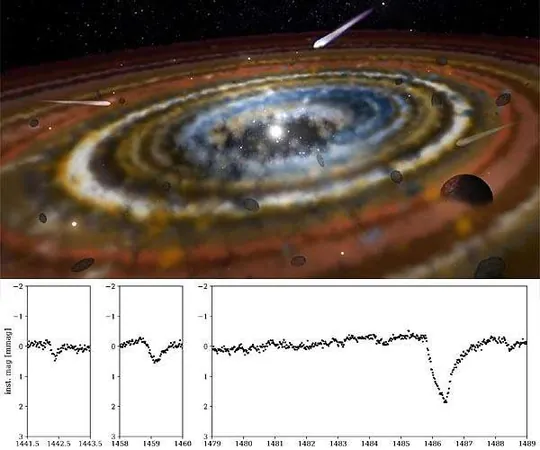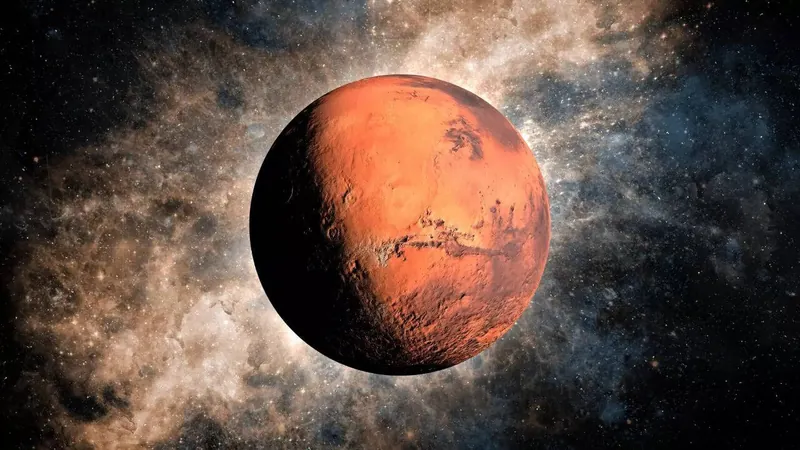
Astrophysicists Uncover the Mystery of Exocomet Belts Around 74 Nearby Stars: A Game-Changer for Astronomy!
2025-01-19
Author: Ming
Groundbreaking Study Unveils Exocomet Belts
A groundbreaking study led by researchers from Trinity College Dublin has unveiled detailed images of exocomet belts surrounding 74 nearby stars, dramatically advancing our understanding of these celestial structures.
This exceptional research brings us into the cold realms of the universe where icy bodies form and interact—a phenomenon that could shed light on the origins of our own Solar System.
The REASONS Project
The project, dubbed REASONS (REsolved ALMA and SMA Observations of Nearby Stars), marks a pivotal milestone as the first comprehensive mapping of exocomet belts across a wide spectrum of star ages, from newly formed celestial bodies to mature systems akin to our own.
These belts, located tens to hundreds of astronomical units (AU) away from their stars, reveal cold temperatures ranging from -250 to -150 degrees Celsius, transforming water into ice and creating vast reservoirs of frozen materials in these distant systems.
Advanced Observational Techniques
Utilizing the advanced capabilities of the Atacama Large Millimeter/submillimeter Array (ALMA) in Chile and the Submillimeter Array (SMA) in Hawaii, the researchers were able to capture electromagnetic radiation at millimeter and submillimeter wavelengths.
This unprecedented technology allowed them to observe the tiny pebbles—millimeter-sized remnants of comet collisions—within the exocomet belts.
Luca Matra, an Associate Professor at Trinity's School of Physics and the lead author of the study published in Astronomy and Astrophysics, describes exocomets as "boulders of rock and ice, at least 1 km in size" that collide and break down to form the observed pebbles.
Diversity of Exocomet Belts
The findings of the study revealed intriguing diversity within these belts.
While some systems displayed narrow rings reminiscent of our Solar System's Edgeworth-Kuiper belt, a significant number presented broader, disk-like structures.
The researchers also observed certain systems with multiple rings or eccentric belts, hinting at the gravitational influence of unseen planets, shaping the arrangement of matter within these regions.
Population-Wide Characteristics
What makes this survey particularly remarkable is its large-scale nature, enabling an assessment of population-wide characteristics.
Matra explained, "We found that older planetary systems have fewer pebbles due to a depletion of larger exocomets, and this depletion occurs at a quicker rate for those belts situated closer to the central star."
Furthermore, their analysis suggested the potential presence of substantial, yet unobserved bodies, ranging from 140 km to the size of our Moon, lurking within these belts, based on their vertical thickness measurements.
Implications for Future Research
Dr. David Wilner, a Senior Astrophysicist at the Center for Astrophysics | Harvard and Smithsonian, highlighted the significance of the technologies employed.
“The ALMA and SMA are extraordinary tools that provide new insights into the workings of the universe,” he articulated, suggesting that the REASONS survey lays a formidable groundwork for future explorations.
Beyond just the immediate findings, the dataset gathered from the REASONS survey holds profound implications for our understanding of the birth and evolution of planetary systems, drawing connections from the James Webb Space Telescope (JWST) to upcoming Extremely Large Telescopes.
This large-scale research initiative is destined to leave a lasting legacy, promising to propel forward our exploration of the cosmos and deepen our understanding of how planetary systems like ours form and develop.

 Brasil (PT)
Brasil (PT)
 Canada (EN)
Canada (EN)
 Chile (ES)
Chile (ES)
 Česko (CS)
Česko (CS)
 대한민국 (KO)
대한민국 (KO)
 España (ES)
España (ES)
 France (FR)
France (FR)
 Hong Kong (EN)
Hong Kong (EN)
 Italia (IT)
Italia (IT)
 日本 (JA)
日本 (JA)
 Magyarország (HU)
Magyarország (HU)
 Norge (NO)
Norge (NO)
 Polska (PL)
Polska (PL)
 Schweiz (DE)
Schweiz (DE)
 Singapore (EN)
Singapore (EN)
 Sverige (SV)
Sverige (SV)
 Suomi (FI)
Suomi (FI)
 Türkiye (TR)
Türkiye (TR)
 الإمارات العربية المتحدة (AR)
الإمارات العربية المتحدة (AR)